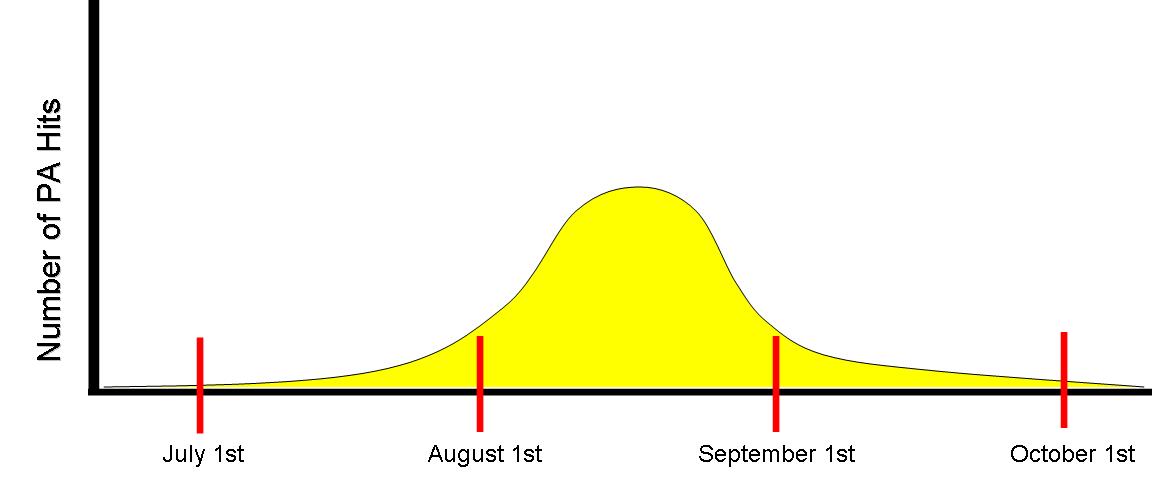As we approach the big month of August 2014, be on the lookout for big hits to the Project August dreams. This one comes from the planetary section of report #4, and two surprises surfaced: 1) Neptune wasn’t a planet, and 2) the headline wouldn’t come out in August, but a few weeks early.
Here’s MTB’s dream from June 9th, which would be followed by very surprising headline from July 7th.
My wife was apparently in charge of a diving expedition. The expedition was to take place on the planet neptune, in the atmosphere where it was frozen enough to act as if it was a liquid. The suits were more like space suits than diving suits.
The plan called for leaving a mountain and going counterclockwise around the mountain. I was stating that that was not a good plan, as there would be a massive head current when we were trying to go around the top side of the mountain. I wanted to abort it, but my wife was insisting that we had to do it (I’ve forgotten why but I believe it was because it was necessary to get photographs).
Deep-sea streaming: 500-mile NEPTUNE cabling brings Internet to the ocean floor
It cost millions, but NEPTUNE lets scientists—and you—stream sights and sounds 24/7.
by Matthew Braga Jul 7, 2014 1:00 am UTC
The Juan de Fuca tectonic plate is by far one of the Earth’s smallest. It spans just a few hundred kilometers of the Oregon, Washington, and British Columbia coast. But what the Juan de Fuca lacks in size it makes up for in connectivity. It’s home to a unique, high-speed optical cabling that has snaked its way across the depths of the Pacific seafloor plate since late 2009.
This link is called NEPTUNE—the North-East Pacific Time-Series Underwater Networked Experiment—and, at more than 800 kilometers (about 500 miles), it’s about the same length as 40,000 subway cars connected in a single, long train.
A team of scientists, researchers, and engineers from the not-for-profit group Oceans Network Canada maintains the network, which cost CAD $111 million to install and $17 million each year to maintain. But know that this isn’t your typical undersea cable. For one, NEPTUNE doesn’t traverse the ocean’s expanse, but instead loops back to its starting point at shore. And though NEPTUNE is designed to facilitate the flow of information through the ocean, it also collects information about the ocean, ocean life, and the ocean floor.
So forget the Internet of Things—NEPTUNE has created an Internet-connected tectonic plate.
Discussion / Timing
Assuming no later surprise from the planet Neptune appears, MTB’s DreamSeer score for this dream/news was over 4.0 at about 4.3. Notice first the timing of this combination…its right at about one month (June 9th to July 7th).
In our last timing analysis for the Spanish King prediction, we tried analyzing that from a lunar schedule. Perhaps the lunar trend might actually become something significant, but probably not from an absolute standpoint, but rather a relational perspective. Here’s what I mean…
At this early juncture, it appears that a specific moon phase isn’t particularly poignant. For example, it doesn’t appear that a full moon or new moon brings in more important dreams. However, it does appear that whatever moon phase is present when the dream appears, that the same phase is present when the dream manifests.
Important: This is NOT a scientific observation, yet. It is way too early to formulate timing trends such as the lunar scale at this point in the game.
The Connection to Reality
MTB spent his dream life swimming around in the liquid atmosphere of Neptune. Obviously, the name Neptune itself was a direct match, and the fact that he was leading a diving expedition was uncanny.
The landscape in the dream was very mountainous, and although the news article didn’t use the word “mountain,” I would imagine the ocean floor near tectonic divides to be very “mountainous.”
However, the big hidden jewel came from the point of the whole expeditionary mission: to collect pictures. To recognize this connection, one must know the history behind the NEPTUNE project:
University of Washington Oceanography Professor John Delaney first proposed the idea for NEPTUNE in the mid-1990s, sensing the Internet’s then-rapid proliferation would have larger implications than simply connecting home and office PCs. He suggested “distributed robot-sensor networks throughout the oceanic environment” would soon observe the seas continuously in ways that researchers on boats with precious little sea time could scarcely imagine or afford.
MTB’s mission was precisely the same objective of the NEPTUNE system.
Conclusion
Let’s hear it for MTB. This one was a spectacular display of how metaphor and literalism can be intermingle and accurately predict future headlines. For those concerned about it not being in August…I share your worries.
Based on what we’re seeing as far as the proximity to August, I suspect a sort of bell curve for the final results. In other words, we see a few hits in June, more in July, and hopefully even more in August. Invariably, then, we’ll most likely see some hits in September and probably trailing off in October.
Note: This graph is hypothetical at this point. We obviously won’t know the actual graph until after the project is complete and fully analyzed. This graph simply displays what we expect to happen based on various indicators and research throughout the past century.
Copyright © 2014 Chris McCleary. Except for quotes, all rights reserved.
---------- NDC Announcments -----------
Don’t miss our daily DreamBot run which shows a brief status of the collective unconscious.
Copyright © 2014 Chris McCleary. Except for quotes, all rights reserved and any reference about this material requires a link back to this page.

